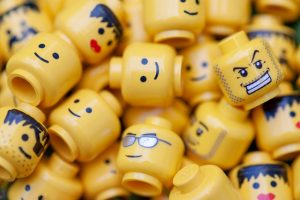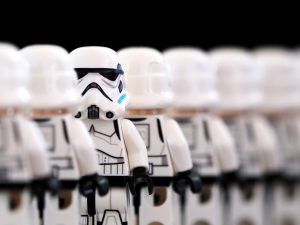Disclaimer: This Kids’ Blog post is aimed mainly at the parents of young children. Kids read on at your peril!
Kia ora! Further to our recent post for kids about the wonderful world of LEGO®, we thought it might be a good idea to talk to parents about just how much value you can get out of a session of LEGO® play time with your kids. We all know that LEGO® is lots of fun, super creative and a favourite of all ages, but one of the reasons we hold so many LEGO® sessions in libraries is because we use it as a tool for learning about literacy. LEGO® is an excellent gateway to developing children’s literacy in a fun, informal way, and opens up a rich world of storytelling, world building, character development and language skills.

We use several techniques to enrich LEGO® play time that you may like to try yourself next time you settle in to build with your kids. Here are some examples:
20 Questions
As you build, play a game of 20 questions with your children where you each try to guess what the other is building. Start with things like “Is it an animal?” or “Can I eat it?” and work your way through the characteristics until the item being built is guessed. Throw in a few silly questions too, just to keep the interest going.
Theme setting
Set a loose theme for kids to build to. For example “something you’d find in a city.” or “something with wings”. This gets kids thinking about particular environments or themes and nudges their creativity into new pathways, particularly if your kids like to build the same thing over and over.

Searching and sharing
We’ve all had that moment where we’re looking for a particular type of LEGO® brick to build our creation, and are sorting through the pile to no avail. Kids have sharp eyes, they’re excellent at spotting just the right brick. But it’s also an opportunity to encourage sharing, kids that come to library LEGO® sessions often offer up bricks out of their own pile of LEGO® they are working with, or offer to break down something they’re working on to swap out for the brick another builder needs. We always make sure to thank a child who shares the LEGO® and often ask them if there is something we can find for them.
It’s also an opportunity to work on colours, shapes and numbers. Kids looking for a particular brick can count how many studs (the correct name for the bumps on LEGO® bricks) wide and long a piece is, ask them what colour, shape and size the particular brick they need is. Or you can ask them to find groups of bricks, for example “I need red bricks.” or “Can you find me bricks that are square?” Sorting and selecting LEGO® bricks develops many skills while also having fun.
Pattern making
When building with LEGO®, use shapes and/or colours to create patterns in your build. Stripes, spots, indents, small and large – there are many ways you can incorporate patterns in your build, which in turn enriches skills like counting, colour, texture, shape and pattern recognition.
Emotions and expressions

LEGO® minifigs and other bricks come in a large variety of faces and body decorations. They are excellent in teaching emotions, expressions and facial features. Ask your child if the character they are building with is a happy or angry character. Ask them to find a minifig that has glasses, or has blue pants, or a tail.
Story and character building
When your child has built their LEGO® creation, spend some time encouraging them to tell you about what they have built. Children approach LEGO® building in different ways. Some like to build elaborate scenes, so you can encourage them to tell you the story of the scene. Others prefer to build a character, like an animal or person, which you can ask them to describe the character’s personality, tell the story of the character, where they might live or what they might eat. If your child builds machinery or architecture, ask them about the features of their build. How does it work? What is it used for?
There are lots of other ways building with LEGO® encourages learning through play, and it’s a fun way for you to spend time with them. Kids love to build LEGO® with adults and it often creates a comfortable atmosphere for conversations about other things happening in their lives. It promotes relaxation and concentration. Depending on your child’s age and skill levels, you can scale the type of learning to suit and most importantly, have fun! If you need a little more inspiration, we have lots of books about LEGO®, which you can find here.
Who knows, you might even discover you have some shared interests!

(Images in this blog post courtesy of Pixabay)






